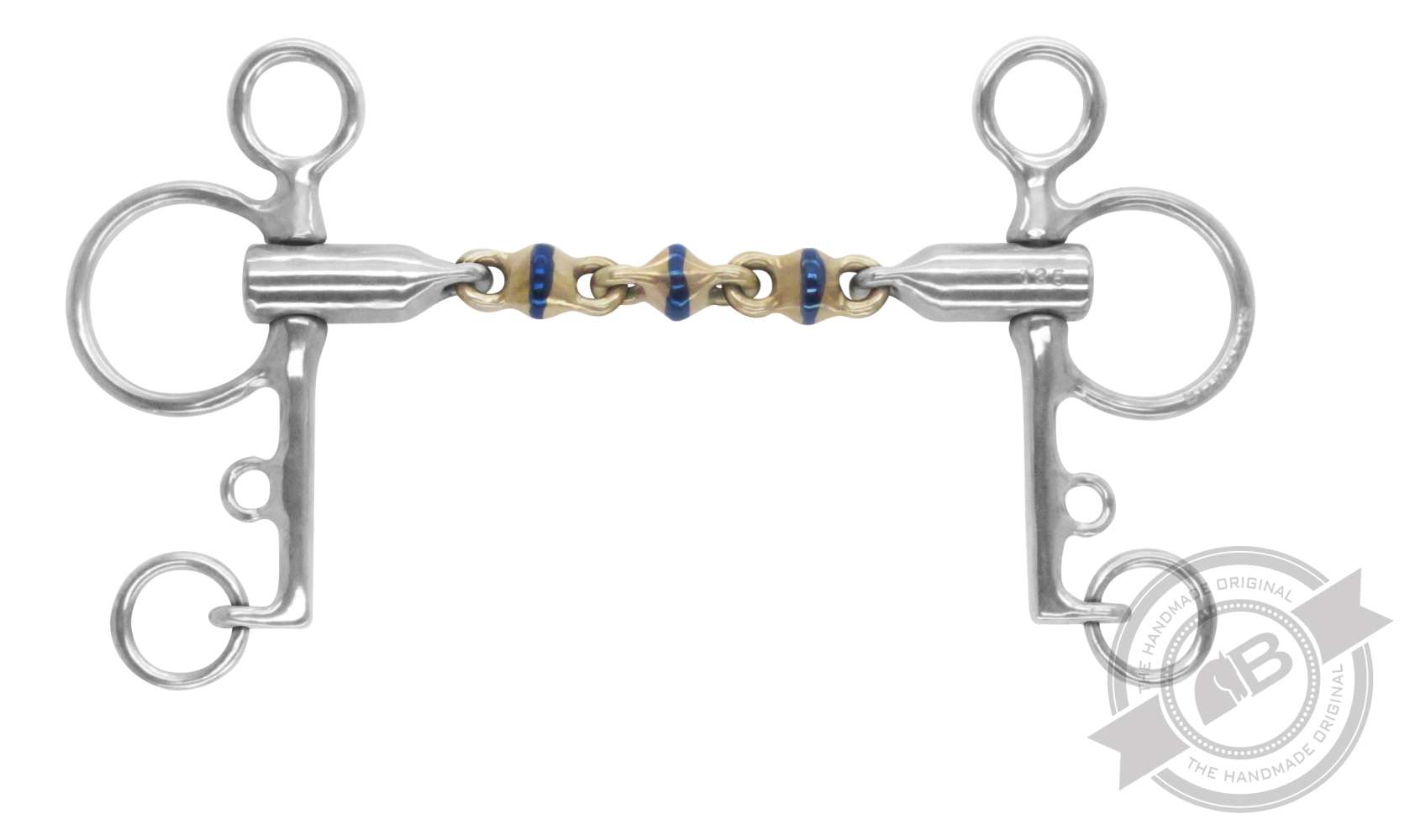


A change in mouthpiece size is generally advised when moving from a loose ring to a fixed cheek or vice versa. The same goes if you are moving from a loose ring into another loose ring. For example, if you currently use a fixed cheek and want to progress onto a Waterford fixed cheek we advise staying in the same size as your current bit. Owing to the unique Lip SMART™ design of the Neue Schule Waterford mouthpiece we would generally suggest that you use the same sizing as your current bit in relation to the cheekpiece design that you use. Shank Length (upper): In FEI Dressage the ruling states that the length of the upper shank must not exceed the length of the shank below. The Neue Schule range has been developed to fall within this ruling.Shank Length (lower): This measurement is taken from below the mouthpiece to the bottom of the shank (not to the bottom of the loose ring) and is generally done in centimetres 5cm, 7cm and 9cm are the options that are available within the Neue Schule Collection. The legal length for FEI Dressage is 10cm.When sourcing a weymouth, there are a couple of additional measurements to consider as demonstrated in the picture below. The mouthpiece thickness is measured directly adjacent to the cheek.
Waterford bit full#
The picture below, showing the NS Tranz Full Cheek is a good example of the points to measure at for this type of bit. Loose Ring Diameter: This measurement is taken from the inner edge of the loose ring and is generally measured in millimetres 70 mm being the average for a standard loose ring and 55 mm the typical bridoon size.įixed cheeks include the Baucher, D-Ring Full Cheek, Eggbutt, Pelham, NS Jumper, Cheltenham, Nelsonand our Weymouth range.The most accurate way to measure the diameter is using a set of callipers, which are widely available. Again, if you put the bit on a flat surface, you can slide a tape measure at right angles below this point and, if you look from above, you can see the measurement of the diameter. Mouthpiece Thickness: This measurement is taken adjacent to (next to) the cheek just before the hole that the ring slides through.The measurement is taken along the full length of the mouthpiece from the inside edge of the loose ring to the inside edge of the opposite loose ring and can be measured in inches or centimetres. Mouthpiece Length: The measurement is taken by placing the bit on a flat surface and pulling the rings apart, so the bit is at its maximum length.The picture below demonstrates a loose ring snaffle.


 0 kommentar(er)
0 kommentar(er)
